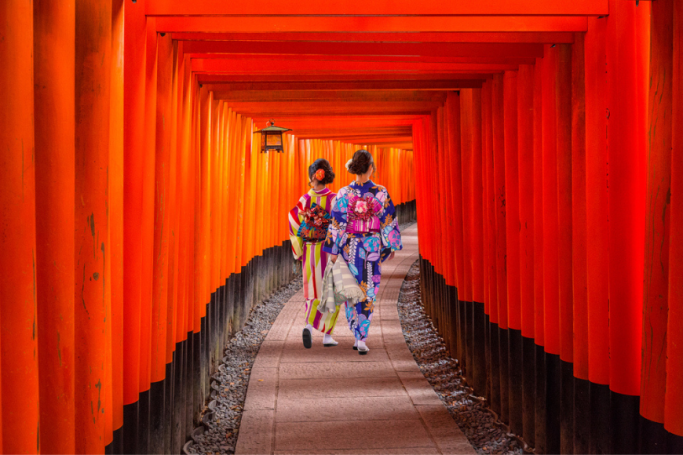Oman has a huge history with different regions and big cities. Their religions also vary although it's a muslim country they have
17 July 2013
| Last updated on 14 June 2017
Overview
The Sultanate of Oman is in the Middle East, on the eastern end of the Arabian Peninsula. It borders the United Arab Emirates in the northwest, Saudi Arabia in the west, and Yemen in the southwest. Oman has two exclaves separated from it by the United Arab Emirates, the Musandam Peninsula and Madha.
Regions
Northern Oman (Muscat, Bahla, Buraimi, Hajar Mountains, Madha, Matrah, Musandam Peninsula, Sohar) the capital city, fertile Al-Batinah coast, majestic Hajar Mountains and the Musandam Peninsula
Central Coastal Oman (Ibra, Masirah Island, Sur, Wahiba Sands) awe-inspiring dunes, old forts and coastal scenery fringing the Indian Ocean
Zufar (Dhofar & Salalah)- lush coastal lowlands and mountains bordering Yemen
Empty Quarter- huge desert wilderness including much of the largely undefined border area with Saudi Arabia.
Cities
Muscat- the historic capital and largest city
Bahla- oasis town which is home to a UNESCO World Heritage Site
Buraimi- border crossing town adjacent to Al Ain in the United Arab Emirates
Ibra- gateway to the Wahiba Sands
Matrah- adjoining the capital city and just as historic
Salalah- the south, which is almost tropical at the time of the Kareef
Sohar- one of the the legendary homes of Sindbad
Sur- where dhows are still made by hand
Other destinations

Hajar Mountains - a majestic range, the highest in the Arabian Peninsula, which stretches into the United Arab Emirates
Madha- tiny exclave of Oman completely surrounded by the United Arab Emirates
Masirah Island- a real desert island experience awaits on this haven for turtles and other wildlife
Musandam Peninsula- a rocky exclave on the Straits of Hormuz with some magnificent wadis
Wahiba Sands- massive rolling dunes as far as the eye can see
Geography
A vast gravel desert plain covers most of central Oman, with mountain ranges along the north (Al Hajar Mountains) and southeast coast, where the country's main cities are also located: the capital city Muscat, Sohar and Sur in the north, and Salalah in the south. Oman's climate is hot and dry in the interior and humid along the coast. During past epochs Oman was covered by ocean, witnessed by the large numbers of fossilized shells existing in areas of the desert away from the modern coastline.
The peninsula of Musandam enclave, which has a strategic location on the Strait of Hormuz, is separated from the rest of Oman by the United Arab Emirates. The series of small towns known collectively as Dibba are the gateway to the Musandam peninsula on land and the fishing villages of Musandam by sea, with boats available for hire at Khasab for trips into the Musandam peninsula by sea.
Oman's other exclave, inside UAE territory, known as Madha, located halfway between the Musandam Peninsula and the main body of Oman, is part of the Musandam governorate, covering approximately 75 km2 . Madha's boundary was settled in 1969, with the north-east corner of Madha barely 10 m from the Fujairah road. Within the Madha exclave is a UAE enclave called Nahwa, belonging to the Emirate of Sharjah, situated about 8 km along a dirt track west of the town of New Madha, consisting of about forty houses with a clinic and telephone exchange.
Demographics
According to the 2010 census, the total population was 2.773 million. Of those, 1.96 million were Omanis. The population has grown from 2.340 million in the 2003 census to 2.773 million in the 2010 census. In Oman, about 50% of the population lives in Muscat and the Batinah coastal plain northwest of the capital; about 200,000 live in the Dhofar (southern) region, and about 30,000 live in the remote Musandam Peninsula on the Strait of Hormuz.
Some 600,000 foreigners live in Oman, most of whom are guest workers from Pakistan, Bangladesh, Egypt, India and the Philippines.
Religion
Around 67% of the population consists of Ibadhi, a form of Islam distinct from the Sunni and Shia denominations, 32% Sunni Muslims and the Shiia forming the remaining 1% of the Omani population.
The Oman government does not keep statistics on religious affiliation, but most citizens are Muslims. Non-Muslim religious communities individually constitute less than 5 percent of the population and include various groups of Hindus, Buddhists, Zoroastrians, Sikhs, Baha'is, and Christians. Christian communities are centered in the major urban areas of Muscat, Sohar and Salalah and include Roman Catholic, Eastern Orthodox, and various Protestant congregations, organized along linguistic and ethnic lines. More than fifty different Christian groups, fellowships, and assemblies are active in the Muscat metropolitan area, formed by migrant workers from Southeast Asia. Many of the non-Muslims in Oman are due to the historical and cultural influence of India.
Climate
The climate generally is very hot, with temperatures reaching 54 °C (129.2 °F) in the hot season, from May to September.
Annual rainfall in Muscat averages 100 mm (3.9 in), falling mostly in January. Dhofar is subject to the southwest monsoon, and rainfall up to 640 mm (25.2 in) has been recorded in the rainy season from late June to October.
While the mountain areas receive more plentiful rainfall, some parts of the coast, particularly near the island of Masirah, sometimes receive no rain at all within the course of a year.
Flora and Fauna
Desert shrub and desert grass, common to southern Arabia, are found, but vegetation is sparse in the interior plateau, which is largely gravel desert.
The greater monsoon rainfall in Dhofar and the mountains makes the growth there more luxuriant during summer; coconut palms grow plentifully in the coastal plains of Dhofar and frankincense is produced in the hills, with abundant oleander and varieties of acacia.
The Al Hajar Mountains are a distinct eco-region, the highest points in eastern Arabia with wildlife including the Arabian tahr.
Indigenous mammals include the leopard, hyena, fox, wolf, and hare, oryx and ibex. Birds include the vulture, eagle, stork, bustard, Arabian partridge, bee- eater, falcon and sunbird. In 2001 Oman had nine endangered species of mammals and five endangered types of birds and nineteen threatened plant species. Decrees have been passed to protect endangered species, including the Arabian leopard, Arabian Oryx, Mountain gazelle, Goitered Gazelle, Arabian Tahr, Green sea turtle, Hawksbill Turtle and Olive ridley turtle.
Currency
The currency in Muscat is the Omani rial (OMR). One rial is made of one thousand Baisa. The rial is officially tied to the US dollar at 1 rial = 2.58 dollars; exchange rates on the streets are a percent or two lower.
There are ATMs at the airport and plenty of them in Muscat and every main town, although not all of them take foreign cards. You can change foreign currency at the counters inside the airport and at money exchanges throughout Oman.
Eat
The food is mainly Arabic, Lebanese, Turkish, and Indian. Many Omanis make a distinction between "Arabic" food and "Omani" food, with the former being the description of the standard dishes found throughout the Arabian Peninsula.
Omani food tends to be less spicy and served in quite large portions - whole fish are not uncommon at lunch in some local restaurants (sticking to local food, it is quite easy to eat a substantial meal for less than OR2). As benefits of a country with a long coastline, seafood is quite a common dish, particularly shark, which is surprisingly tasty. True traditional Omani food is hard to find in restaurants.
Omani sweets are well-known throughout the region, with the most popular being "halwa". This is a hot, semi-solid substance which behaves a little like honey and is eaten with a spoon. The taste is similar to Turkish Delight. Omani dates are among the best in the world and can be found at every social place and at offices.
American fast food chains, especially KFC, McDonalds, and Burger King, are not hard to find in the bigger cities, especially Muscat and Salalah.
Respect
The Omanis are generally very humble and down-to-earth people. The usual rules of respect when travelling in a Muslim country should be followed in Oman, even when locals appear to be a little less "uptight" than their neighbours.
While Omanis may not say anything to foreigners who dress in tight or revealing clothing, it is quite disrespectful. Yes, some visitors push the goodwill of the Omanis in choosing their attire, but a little sensitivity goes a long way.
Staring is quite common in Oman; children, men and women are likely to stare at you simply for being a foreigner, especially if you travel off-season and in out-of-the-way places. This is not meant as an insult, it rather shows an interest, and a friendly smile will leave the kids giggling and showing off, and the adults happily trying out their few English phrases.





















































_2.jpg?itok=XEABuHuU)















































_2.jpg?itok=j80YWwf-)



















